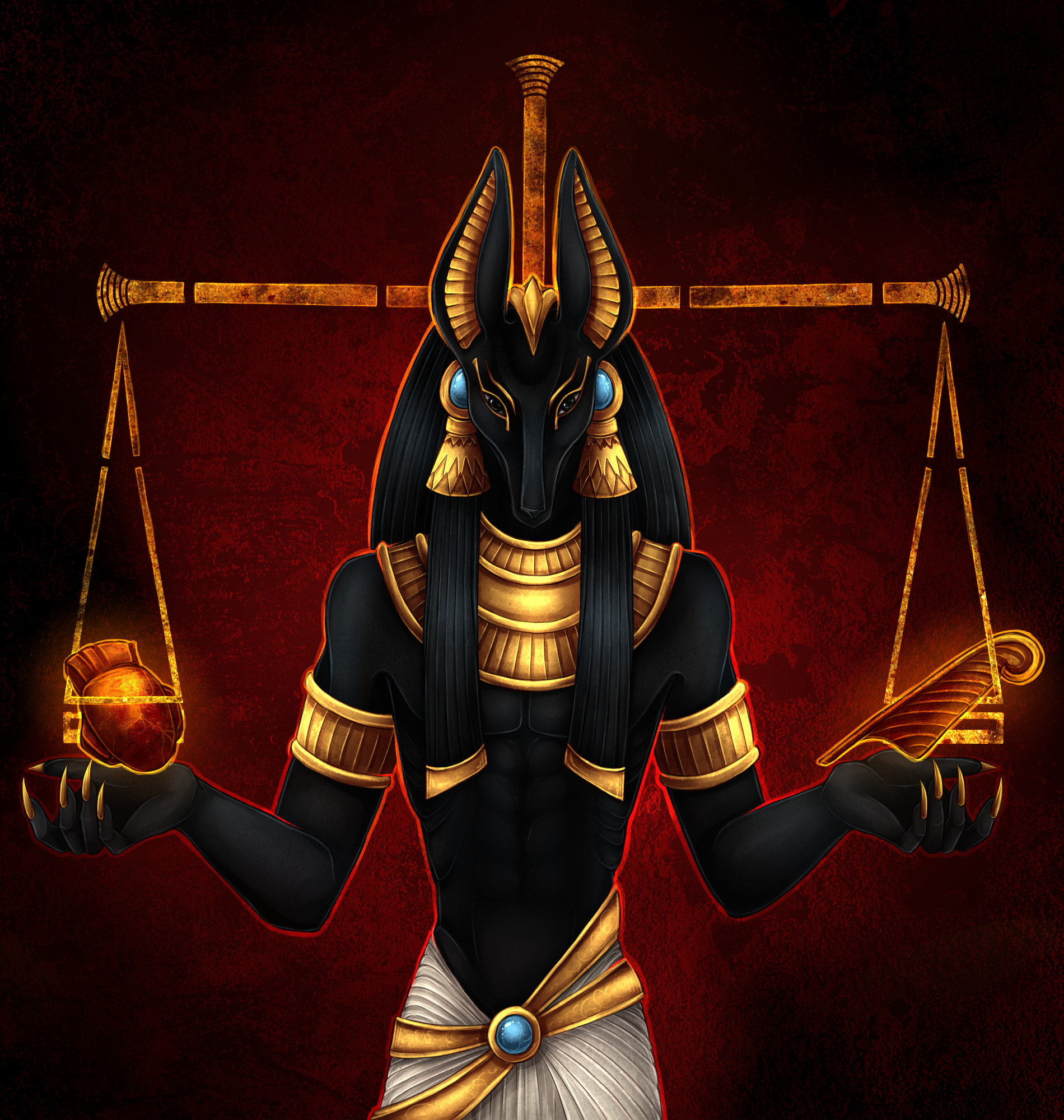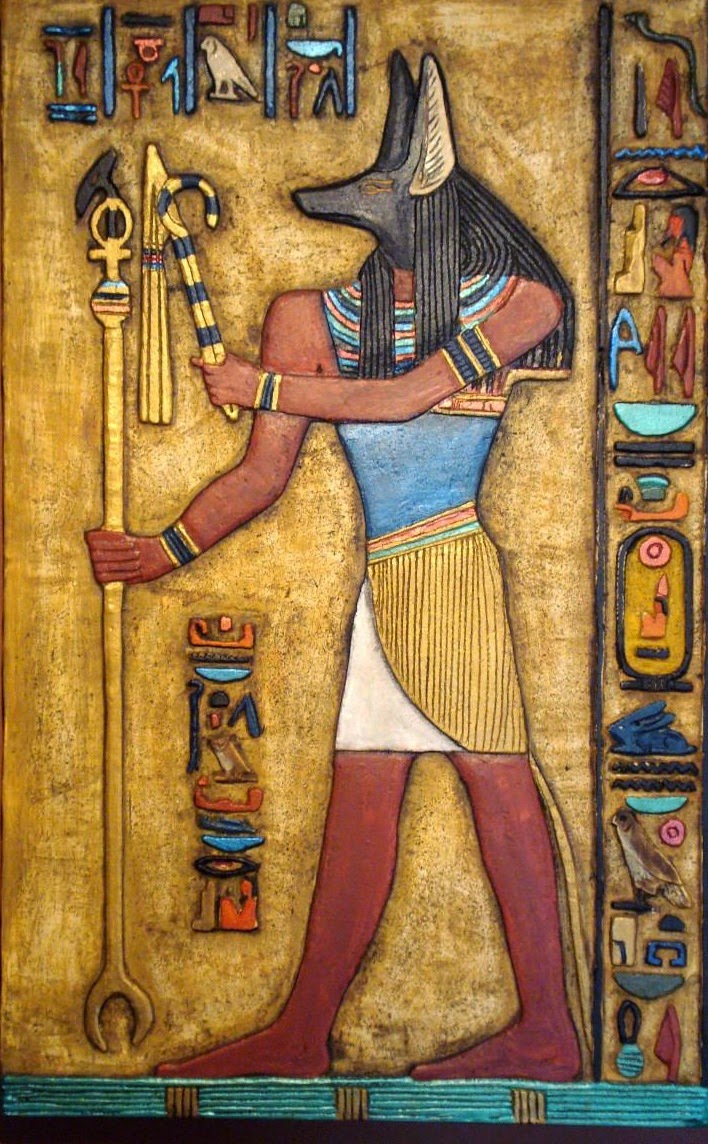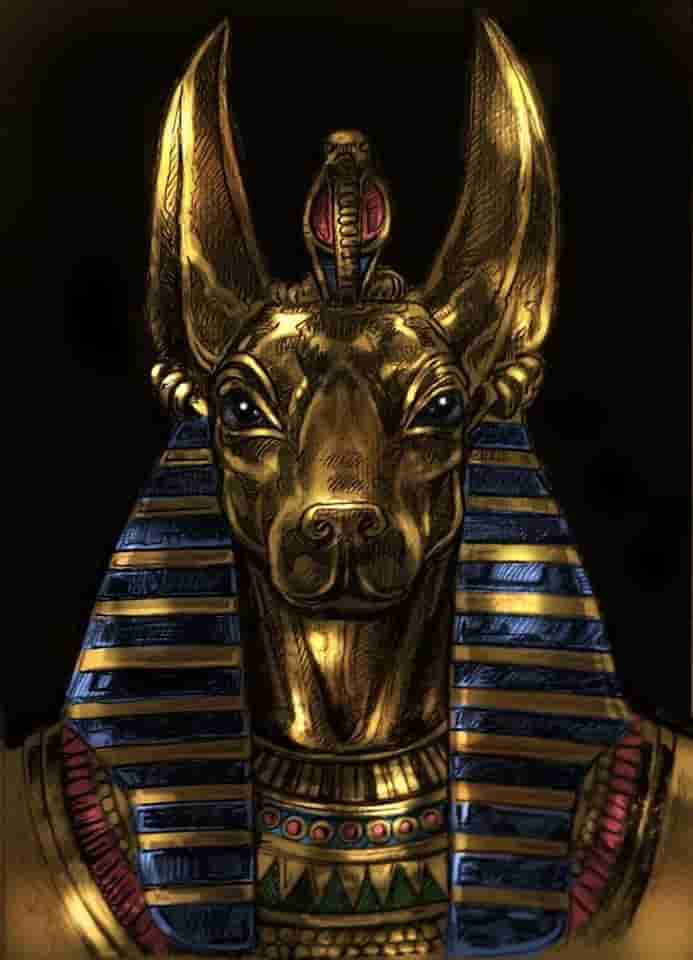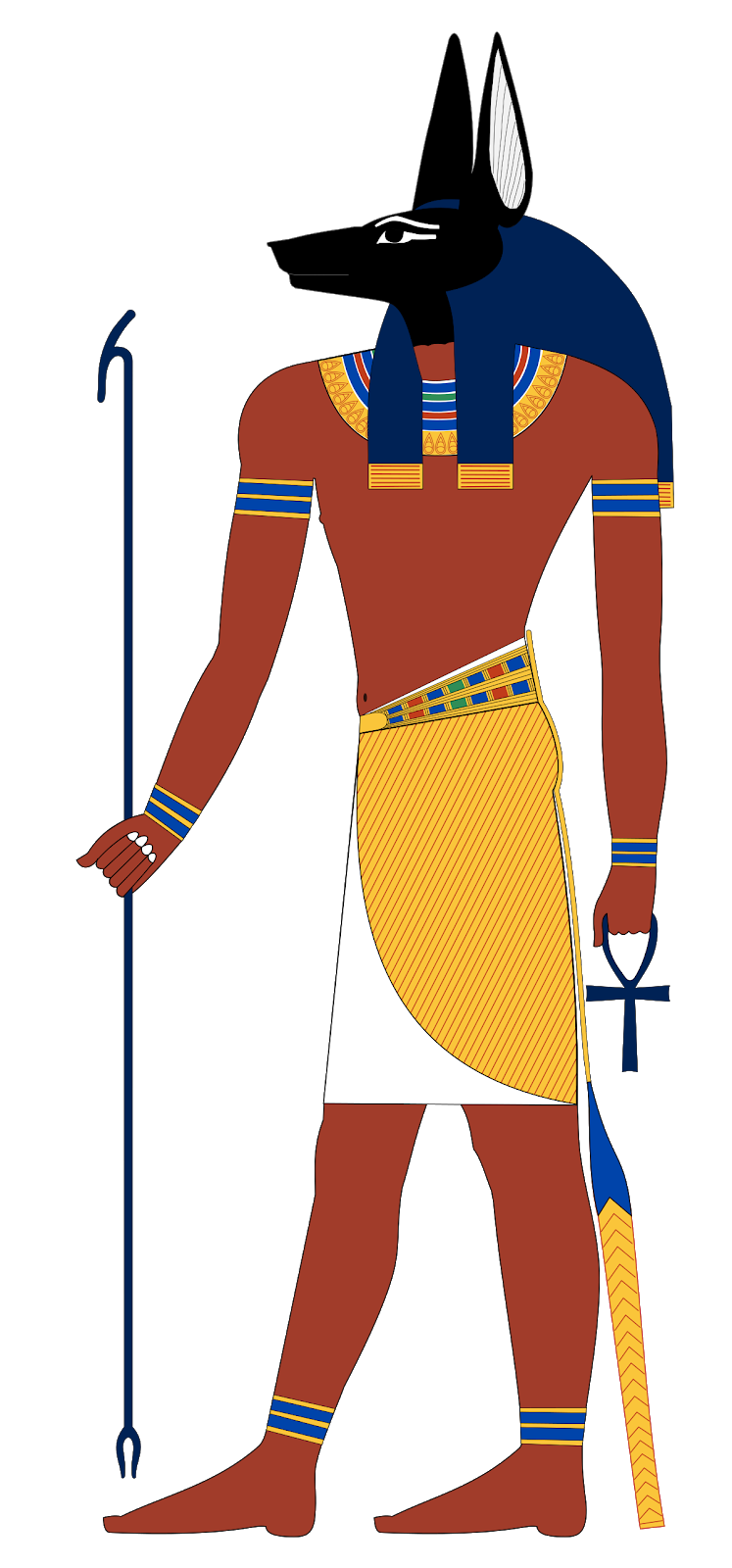
Deus De Egipto Antigo Anubis Ilustração do Vetor Ilustração de hieroglyph, anubis 14637829
Anubis, make sure your vital organs remain functional even at the last moment. His unwavering dedication to preserving the sanctity of the body beyond death is a testament to Egyptian faith. 11. The Egyptian god of Death was a Popular Figure in Art. Metropolitan Museum of Art, CC0, via Wikimedia Commons.

What is Anubis's power? Ancient egyptian art, Ancient egyptian gods, Egyptian art
Anubis, the Jackal god of Egyptian mythology, was lord of the afterlife, protector of the cemeteries, and war-prince son of Osiris the God-king. Worshipped across all of Egypt, he held a special place in the seventeenth nome, where he was the patron god and protector of the people. Priests of Anubis would perform the mummification rituals.

dios de los muertosanubis Egyptian Mythology, Mythology Art, Egyptian Goddess, Ancient Egyptian
Anubis weighing the soul of the scribe Ani, from the Egyptian Book of the Dead, c. 1275 bce. Anubis, ancient Egyptian god of funerary practices and care of the dead, represented by a jackal or the figure of a man with the head of a jackal. In the Early Dynastic period and the Old Kingdom, he enjoyed a preeminent (though not exclusive) position.

Sign in Dioses egipcios, Anubis dios egipcio, Egipto antiguo
Osiris, Anubis, Isis - de namen van de Egyptische goden ken je misschien wel, maar waar staan ze eigenlijk voor? Dit is een overzicht van de belangrijkste Egyptische goden. Goden waren allesbepalend voor de oude Egyptenaren. Maar je raakt snel het spoor bijster in de Egyptische godenwereld, doordat veel goden gaandeweg van gedaante veranderen.

Anubis Egyptian God Wallpaper (61+ images)
Purpose. Known as the jackal-god of mummification, Anubis was responsible for making sure the journey to the underworld went smoothly for man. He was considered the inventor of embalming and had several important functions. First, he overlooked the embalming of deceased bodies. Embalming isn't simple work and Anubis ensured it was done correctly.

"Anubis" by Jerad Marantz, 2016. 神話上の生き物の芸術, エジプト, アヌビス
Anubis is the ancient Egyptian god of the afterlife and all aspects of death and what comes after. He is one of the oldest Egyptian gods, with the earliest mentions being between 6000 and 3150 BCE.

Panteón de Juda Anubis Mitología egipcia
Anubis is een Egyptische god.. Meestal is hij afgebeeld met een hoofd als een jakhals.Anubis was de beschermer van de doden, hij zorgde dat ze niet werden vernietigd. Voordat Osiris belangrijk werd, was Anubis de belangrijkste god van alle goden.De taak van Anubis is zorgen voor goede balseming en een eeuwig leven.

Anubis by LarsRune on DeviantArt Egyptian gods, Ancient egypt art, Anubis
The word "Anubis" is actually a Greek word. The Egyptian word for "Anubis" is " Anpu" or " Inpu". In ancient Egypt, the word "Anpu" meant "deterioration and death". It is also signified darkness and black, and mystery. Anubis was reputed as the Lord of the Necropolis (a site that housed the dead - cemetery).

Anubis the Egyptian God
Anubis (also known as Inpu, Inpw, Anpu) is the Egyptian god of mummification, funerary rites, guardian of tombs, and guide to the afterlife as well as the patron god of lost souls and the helpless. He is one of the oldest gods of Egypt, most likely developed from the earlier jackal god Wepwawet with whom he is often confused.. Anubis' image is seen on royal tombs from the First Dynasty of.

Anúbis Ancient egyptian gods, Egyptian gods, Anubis
Anubis was an extremely ancient deity whose name appears in the oldest mastabas of the Old Kingdom and the Pyramid Texts as a guardian and protector of the dead. He was originally a god of the underworld, but became associated specifically with the embalming process and funeral rites. His name is from the same root as the word for a royal child.

'ZIEN EN WETEN' OUDEGYPTE EN BELANGRIJKSTE GODEN. (3)
Anubis as a jackal perched atop a tomb, symbolizing his protection of the necropolis. Anubis (/ ə ˈ nj uː b ɪ s /; Ancient Greek: Ἄνουβις), also known as Inpu, Inpw, Jnpw, or Anpu in Ancient Egyptian (Coptic: ⲁⲛⲟⲩⲡ, romanized: Anoup), is the god of funerary rites, protector of graves, and guide to the underworld, in ancient Egyptian religion, usually depicted as a canine.

Anubis Egyptian God Wallpaper (61+ images)
Anubis God. The Egyptian god Anubis of mummification as well as the life after death, and the patron god of the abandoned and powerless. He is one of Egypt's earliest gods, descended from the earlier (and much older) jackal god Wepwawet, with whom he is frequently mistaken as the dog Anubis. Anubis' picture can be found on royal tombs from Egypt's First Kingdom (c. 3150-2890 BCE.

Anubis by REDreev Ancient egyptian gods, Ancient egypt art, Ancient egyptian art
Anubis was the god of the dead and the underworld until the Middle Kingdom, when this role was taken over by Osiris. He is one of the oldest gods, references in text go back as far as the Old Kingdom. Anubis is the inventor and god of embalming and mummification. He guided the death through the underworld (called Duat).

Anubis Ancient egypt art, Ancient egyptian art, Ancient egyptian gods
Anubis, the jackal-headed Egyptian god, is often referred to simply as the god of the dead. While he certainly was associated with death and the Underworld, his role was far more complex than this epithet might suggest. In fact, Anubis's specific role was constantly evolving in Egyptian religion. Was his earliest duty was as a ruler and.

Egyptische Goden Anubis God Anubis God Pictures Anthonie van Sonsbeek
The evolution of Anubis from being recognized as the son of Ra, the sun god, to becoming the Egyptian god of funerary rites, protector of graves and guide to the underworld, provides a captivating insight into the ever-evolving religious and cultural beliefs of ancient Egypt. Anubis. Eternal Space, CC BY-SA 4.0, via Wikimedia Commons.

Anubis, the god of the afterlife in Egyptian mythology, lord of the deadlands and master of
Anubis weighing the soul of the scribe Ani, from the Egyptian Book of the Dead, c. 1275 bce. (more) Mary Evans Picture Library/age fotostock. Anubis was concerned with funerary practices and the care of the dead. He was usually represented as a jackal or as a man with the head of a jackal. The association of jackals with death and funerals.